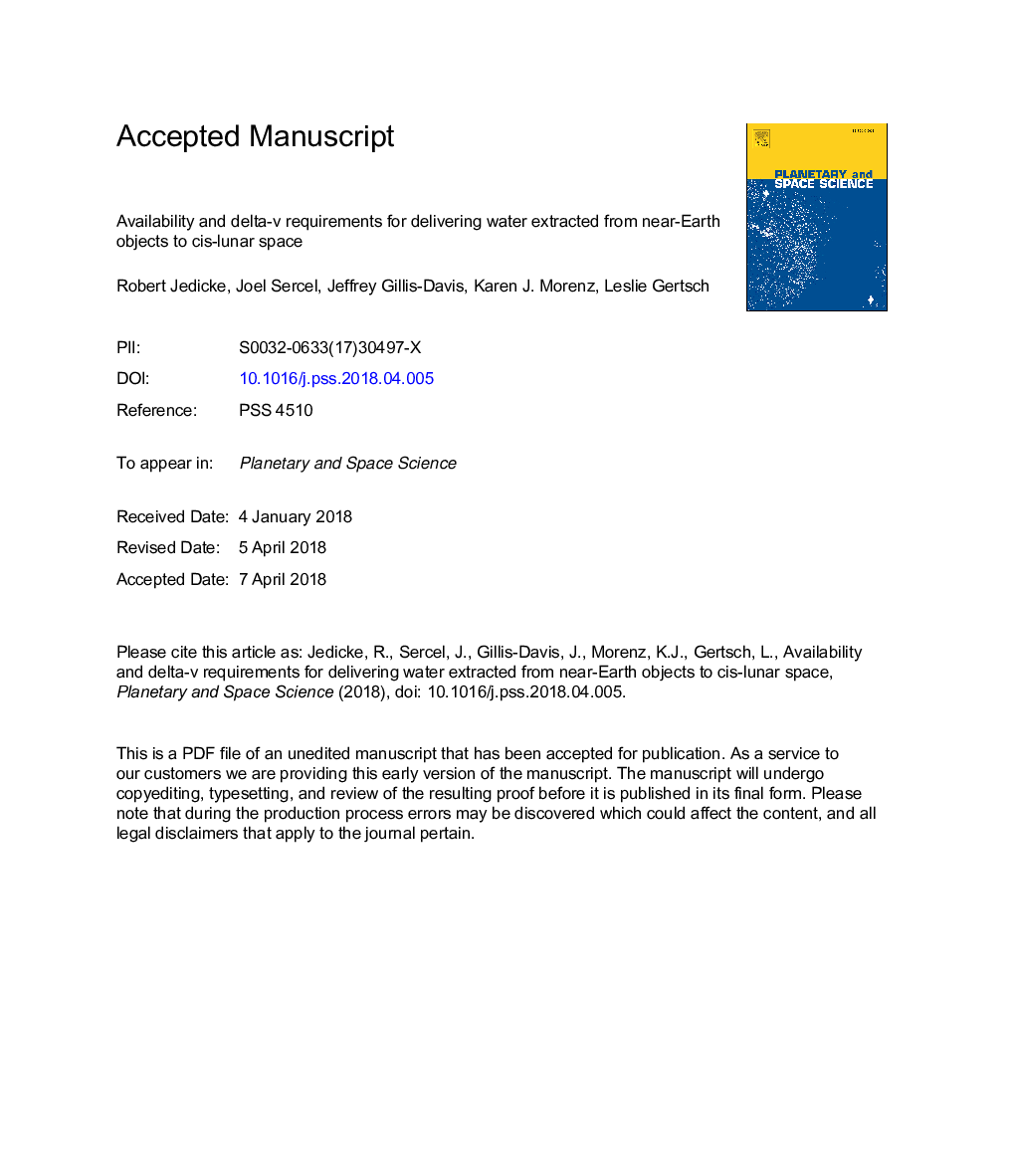| Article ID | Journal | Published Year | Pages | File Type |
|---|---|---|---|---|
| 8142033 | Planetary and Space Science | 2018 | 35 Pages |
Abstract
We have calculated the number of water-bearing near-Earth objects as a function of return-trip delta-v (ÎvRT). First, we combined a model of the near-Earth object's (NEO) orbit and size-frequency distribution with other measurements of their provenance, and the taxonomic distribution of asteroids in the NEO's main belt sources, to calculate the taxonomic distribution of NEOs as a function of their orbital elements and size. Our calculations are in agreement with recent measurements of the ratio of C- and S-complex bodies within the population of small NEOs. Then we developed a simplified mission model to calculate an upper limit on ÎvRT for a mission from an NEO to distant retrograde lunar orbit (DRLO) in cis-lunar space. Combining the first two steps allowed us to develop a synthetic population of low ÎvRT NEOs that includes their taxonomic distribution. Finally, we used measurements of the water-bearing content of the taxonomic classes based on their assumed meteorite associations to calculate the number of water-bearing NEOs as a function of ÎvRT. We find that there are likely thousands of H2O-rich NEOs larger than about 5â¯m diameter with ÎvRTâ²3kmsâ1 and the number of objects increases as ÎvRT3. The rapid increase in the number of objects with ÎvRT suggests that in-situ resource utilization (ISRU) of asteroid-derived water can expand quickly throughout the solar system. NEOs with ÎvRTâ²3kmsâ1 tend to be on Earth-like orbits with semi-major axes aâ¼1au, eccentricities eâ³0, and inclinations iâ³0â. The small, dark, low ÎvRT NEOs are difficult or impossible to detect with Earth-based telescopes because many orbit the Sun interior to Earth's orbit and others have such long synodic periods that they are rarely visible.
Keywords
Related Topics
Physical Sciences and Engineering
Earth and Planetary Sciences
Geophysics
Authors
Robert Jedicke, Joel Sercel, Jeffrey Gillis-Davis, Karen J. Morenz, Leslie Gertsch,
